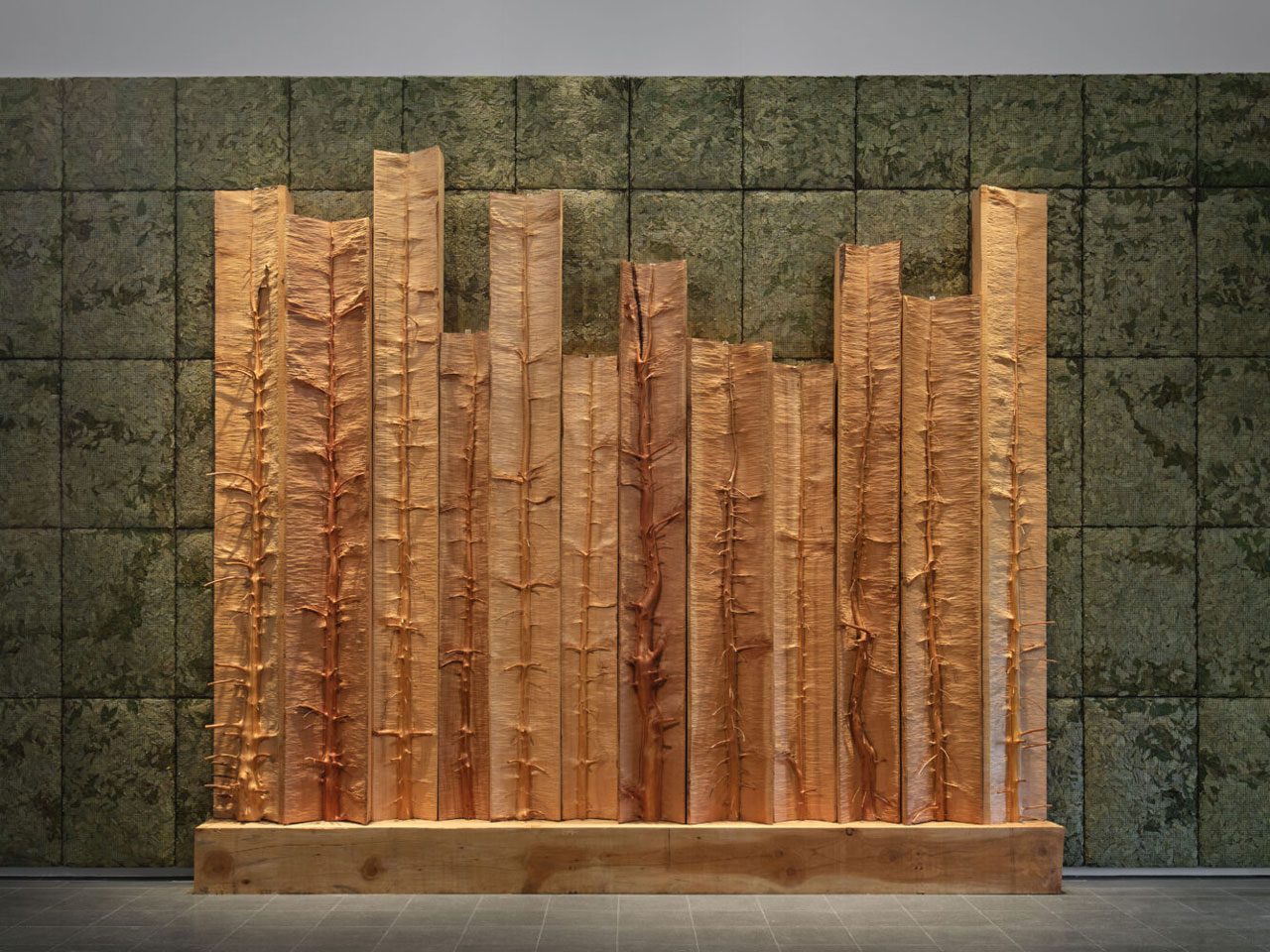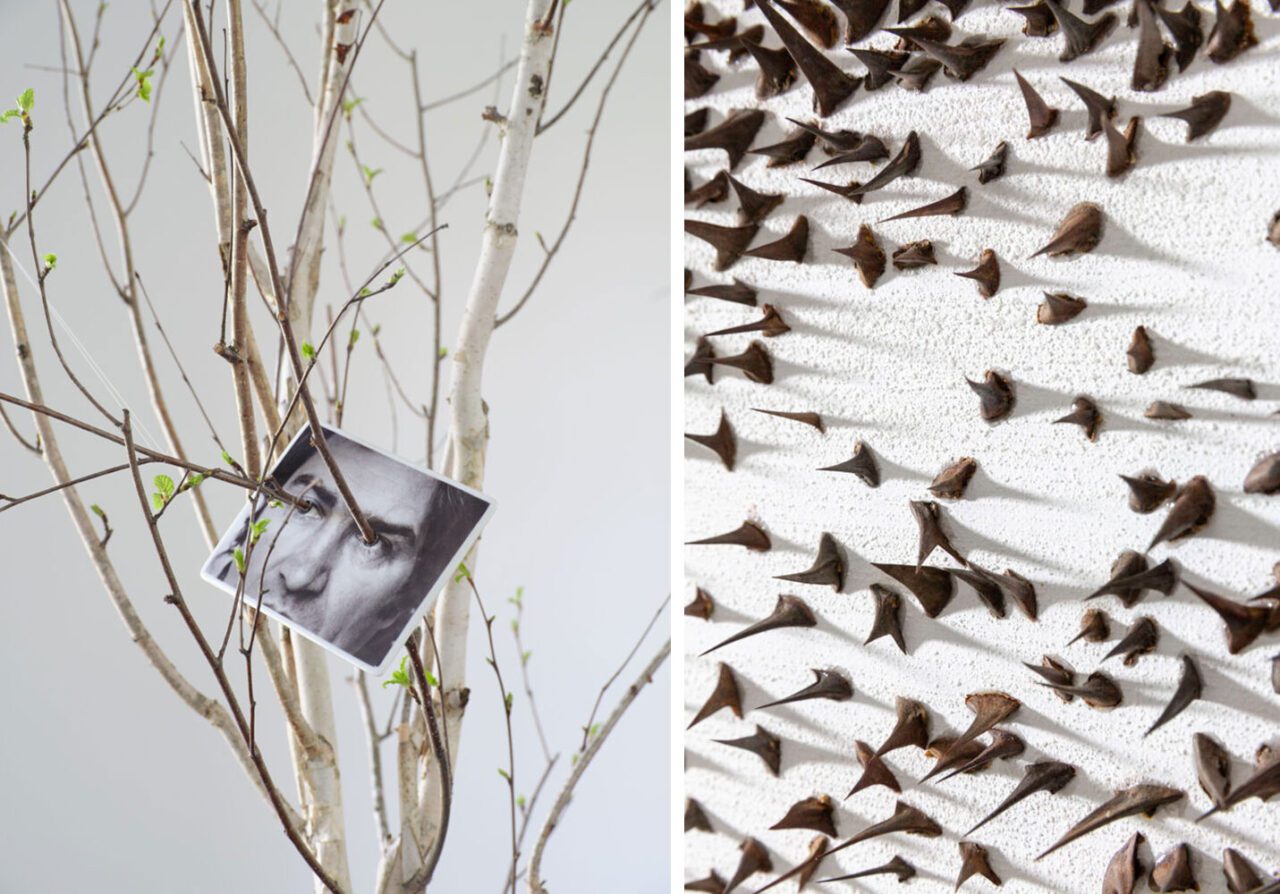PRESENTATION: Giuseppe Penone-Thoughts in the Roots
Born in Garessio, a village near Cuneo in Northern Italy, in 1947, Giuseppe Penone draws deep inspiration from the region’s forested and mountainous landscapes. This environment has shaped his lifelong exploration of the intricate relationships between humans and nature. His first major work, “Alpi Marittime” consists of a series of actions documented by black and white photographs that he carried out in the winter of 1968 in the woods around Garessio.
By Efi Michalarou
Photo: Serpentine Gallery Archive
The exhibition “Thoughts in the Roots” brings together sculptures, installations and drawings from 1969 to today. Using materials like wood, leaves, resin, bronze and marble, Penone’s practice explores the synergy between artistic and organic processes. His imprints of human skin and tree bark investigate the impact of human gestures and the interchangeability of bodies and plants. For Penone, breathing itself becomes a sculptural act, as he seeks to give form to air. At the centre of the exhibition, “Respirare l’ombra” unfolds as a sensory installation made of laurel leaves. Penone likens breathing to the lost-wax casting process, where molten metal fills the mould while wax is expelled from reeds. Here, the dissipating scent of laurel leaves symbolise breath, highlighting the delicate symbiotic relationships in the natural word. By engaging the visual, tactile and olfactory aspects of his materials, Penone uncovers hidden structures, rhythms, gestures and the interconnectedness of living things. For Penone, trees embody the ‘primal and most simple idea of vitality, culture and sculpture’. His “Alberi” series, which began in 1969, are constructed through a process of carving away the outer rings of mature timber, peeling back the layers to reveal the tree’s original form. Over time, the artist’s practice has expanded to include casting trees in bronze, a material that, upon oxidation, develops a patina resembling tree bark. Responding to Serpentine South’s location in Kensington Gardens, Penone extends the exhibition beyond the gallery walls into the surrounding landscape. Three life-size bronze trees stand among their botanical counterparts, blurring the borders between human gestures and the organic world. The exhibition opens with “A occhi chiusi”, exploring the relationship between sight and the act of closing one’s eyes — an enduring theme in Penone’s work. “Rovesciare i propri occhi”, a 1970 black-and-white photograph, captures Penone staring directly at the viewer while wearing mirrored contact lenses. By interrupting his vision and rendering him blind, these lenses reflect back what his eyes would have seen. Penone describes this as a process that ‘defines the volume of my body as a sculpture’. The absence of sight, he suggests, ‘creates space for imagination’. This imagery is further explored in A occhi chiusi, where numerous acacia thorns trace and represent closed eyes, synthesising our senses in connection with nature. The vegetal world is central to Penone’s work. He constructs his “Alberi” by carving away the outer rings of mature timber layer by layer. This process reveals knots left by branches, exposing how the tree once appeared before it was felled. At the centre back of the gallery stands “Alberi libro” created using the same technique but with white fir, cedar and larch wood. The sculpture consists of twelve carved saplings placed side by side, serving as a tangible record of time. As Penone explains: :To enter into the forest of wood is to embark on a voyage in time, into the history of every single tree and every year of its life. The slowness with which a year in the life of a tree is traced and uncovered recalls its growth. The slower it is, the richer in details and little stories and consciousness it will be”. “Respirare l’ombra” is a sensory installation of laurel leaves that envelop the gallery walls. Since the 1970s, Penone has explored the concept of breath as sculpture through different materials. In this installation, a gold-cast sculpture of a human lung is mounted on the wall at average adult height, while the scent of laurel leaves permeates the gallery. To the artist, leaves perform the vital act of producing oxygen for all living beings while also providing shade: Further investigating the relationship between nature and the body, Penone uses organic materials to record his own breath. In “Soffio di foglie”, the artist lies on a heap of boxwood leaves, breathing air into them. The imprint of his body and breath is left on the leaves, recording traces of his physical presence. “Gesti vegetali” is a series of sculptures exploring the symbiotic relationship between natural forms and the human body. Penone first conceived the series in the 1980s, creating drawings for “Gesti vegetali” by tracing movements of the human body with fluid brushstrokes. These shapes were then moulded in clay and finally cast in bronze — a material that, through oxidation, takes on the colour of tree bark. In this installation, three bronze sculptures are placed amongst plant pots, intertwined with living vegetation such as pittosporum and star jasmine. Extending beyond the gallery, the work reaches into Kensington Gardens. “Pressione”, a large-scale graphite imprint created on-site by Penone, spans two walls of the gallery. The work builds on a process he first developed in 1970 with works from the series “Svolgere la propria pelle” in which he captured imprints of his skin by pressing ink- and charcoal-covered adhesive tape onto his body. This method preserved the fine lines and creases of his skin in almost photographic detail. In “Pressione”, these imprints were enlarged, projected onto the gallery walls, and meticulously traced by hand in graphite. The resulting charcoal drawing reveals not only the intricate typography of the artist’s skin, but also the varying pressures exerted — both in the original imprinting process and in the act of drawing itself. Penone’s experimentation with ‘unrolling one’s skin’ extends beyond the human body to the vegetal world. The lush forests depicted in the “Verde del bosco: series are created by imprinting the surfaces of tree bark, branches and leaves. In the process, Penone wraps natural cotton fibres around the trunks of living trees and creates frottage rubbings using leaves. The distinctive furrows of the b/ark are transferred and recorded on the fabric, forming the foundation of the rich vegetation in the drawings. The vibrant greens of fresh spring leaves and the reddish browns of ageing autumn foliage reflect the different seasons. Penone began casting trees in bronze in the late 1980s, often integrating his public sculptures within a matrix of real trees to create a dialogue with the wider environment. “Albero folgorato” and “Idee di pietra: are installed in Kensington Gardens.Standing adjacent to Serpentine South, “Albero folgorato” is based on a hundred-year-old willow tree that grew in Grand-Hornu, Belgium. After being struck by lightning, its trunk split at the centre, laying bare the internal material of the wood. Penone cast the tree in bronze and lined its pulp with gold leaf, capturing the invisible force of nature that sculpted its splintered shape and complex internal structure. “Idee di pietra” explores the relationship between river stones and human thought. In these sculptures, river stones of varying shapes and sizes are placed on the forks of the bronze tree branches.
Photo Left: Giuseppe Penone, Sguardo vegetale (Vegetal Gaze), 1995. Photo ceramic. ©Photo: George Darrell. Courtesy Giuseppe Penone and Serpentine. Photo Right: Giuseppe Penone, A occhi chiusi (With Eyes Closed), 2009. Acrylic, glass microspheres, acacia thorns on canvas, and white Carrara marble. Photo © Archivio Penone. Courtesy Giuseppe Penone
Info: Curators: Claude Adji and Hans Ulrich Obrist, Curatorial Assistant: Alexa Chow, Serpentine Gallery, Serpentine South, Kensington Gardens, London, United Kingdom, Duration: 3/4-7/9/2025, Days & Hours: Mon 12:00-18:00, Tue-Fri 10:00-18:00, Sat-Sun 10:00-19:00, www.serpentinegalleries.org/
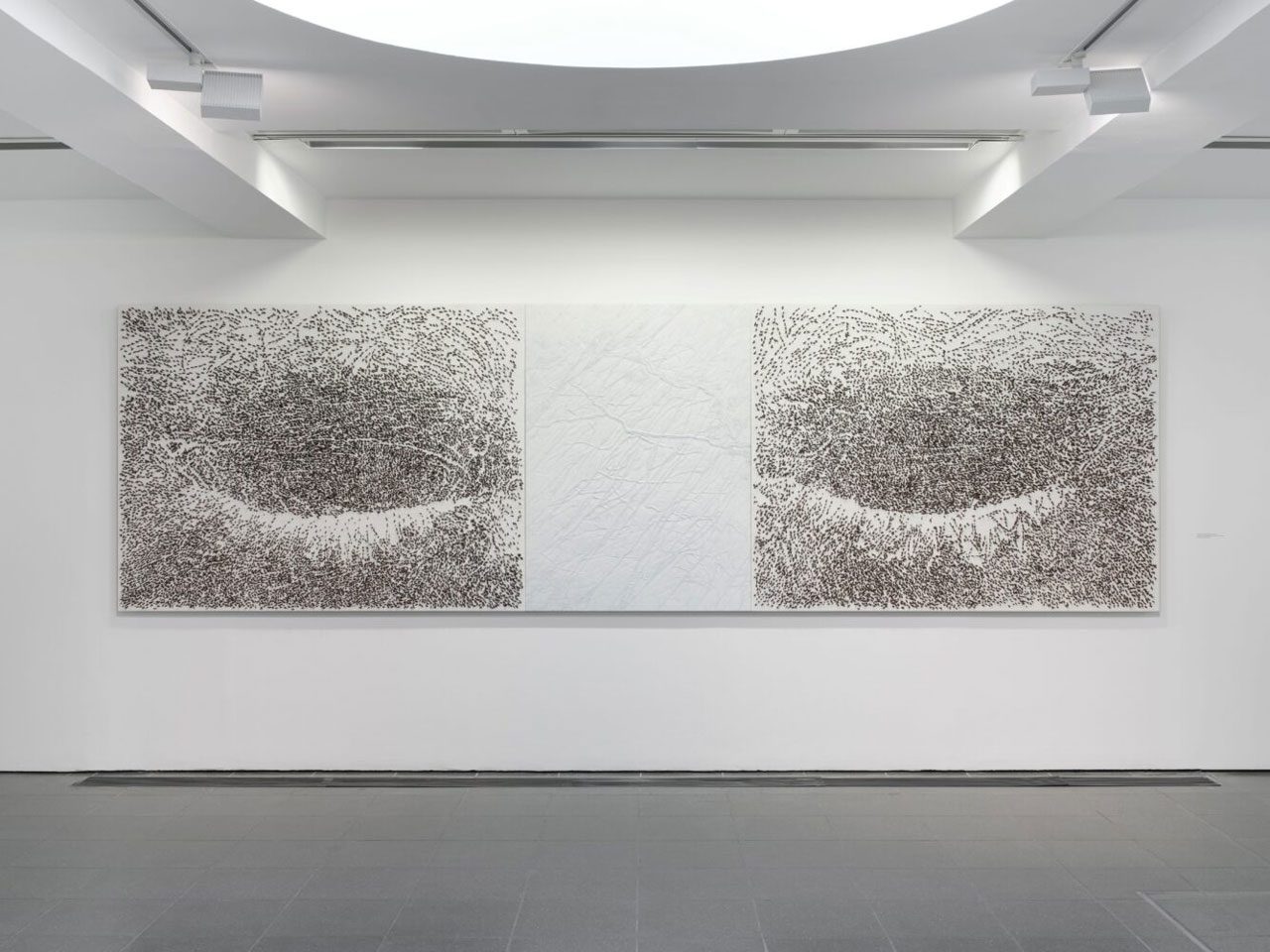

Right: Giuseppe Penone, Albero folgorato (Thunderstruck Tree), 2012. Bronze and gold. ©Photo: George Darrell. Courtesy Giuseppe Penone and Serpentine
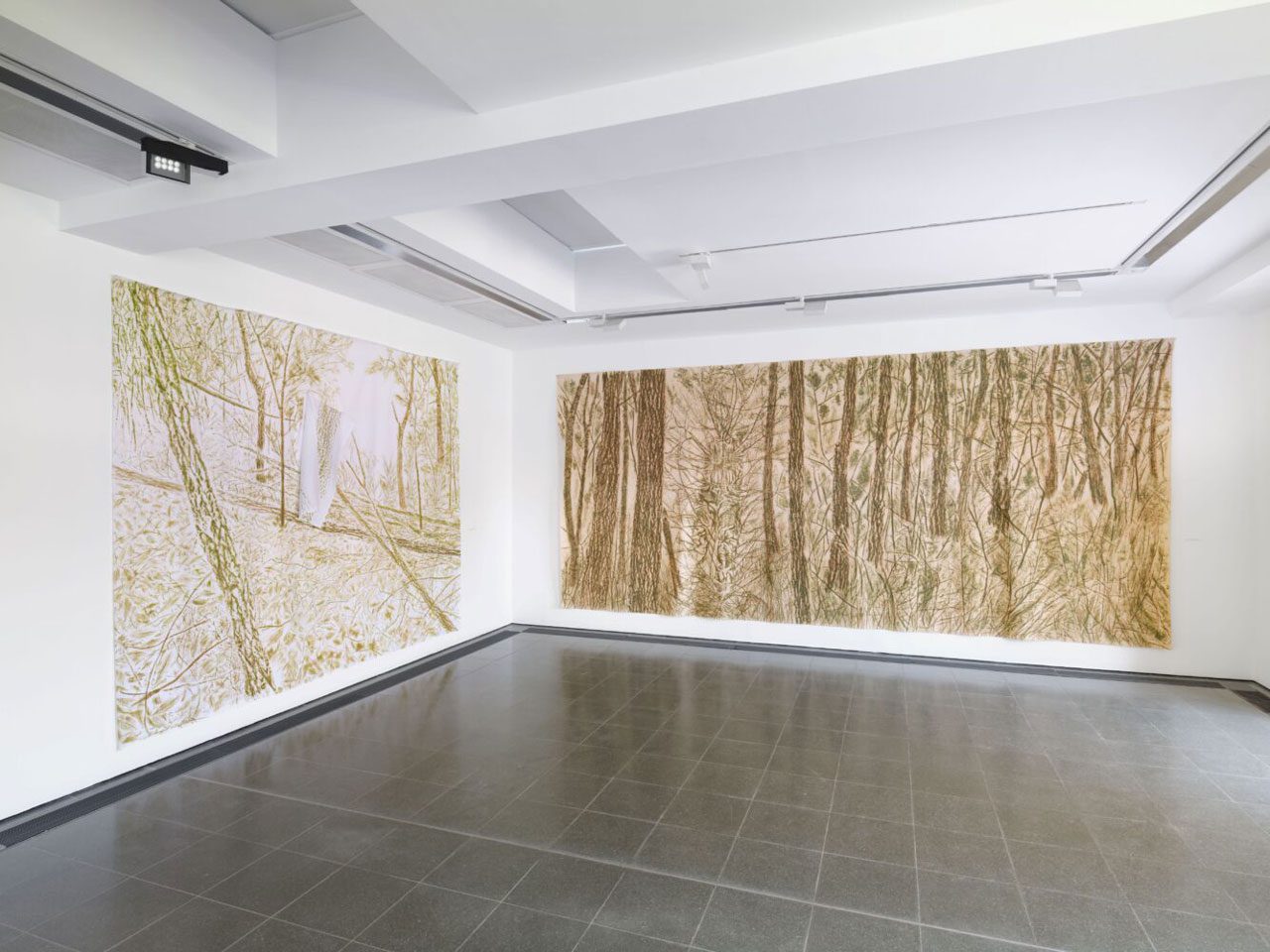
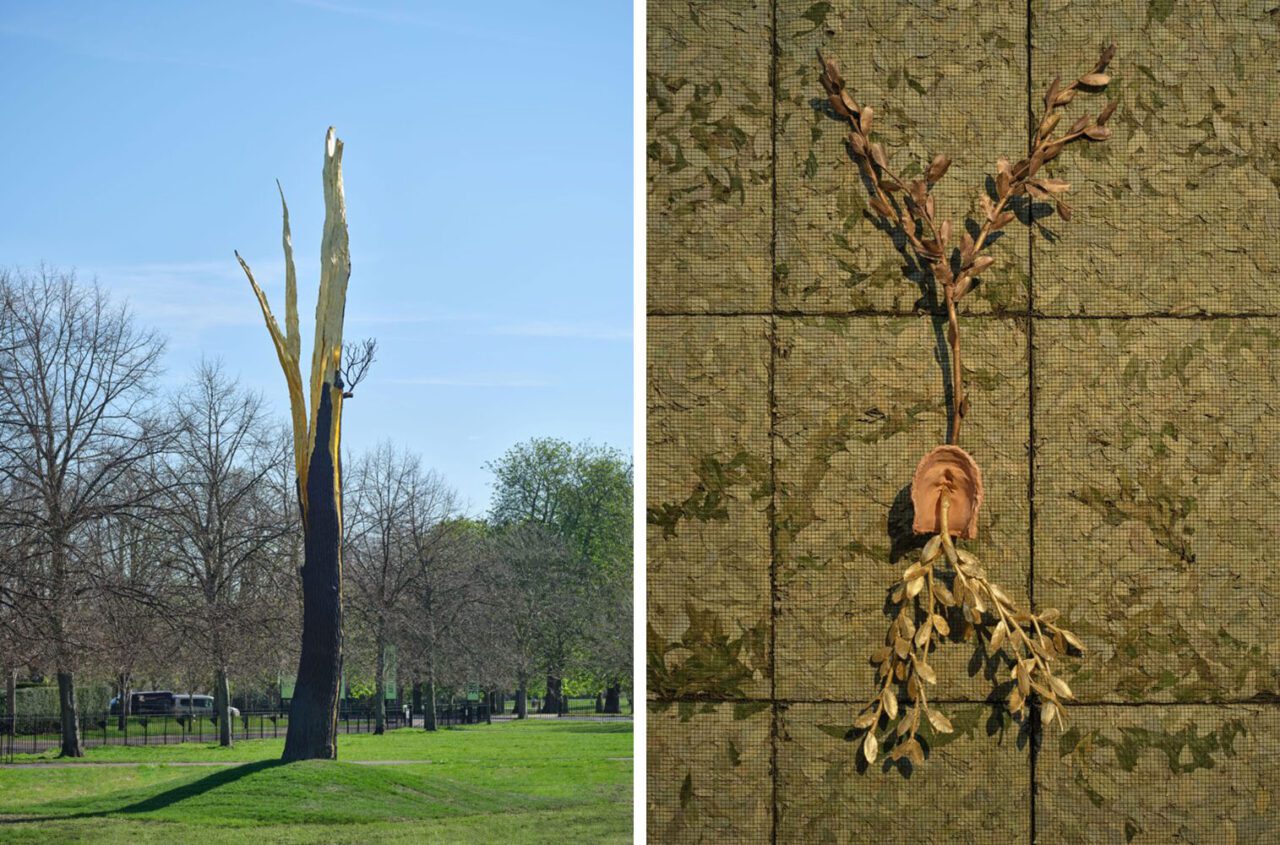
Right: Giuseppe Penone, Respirare l’ombra (To Breathe the Shadow), 2000. Metal grids, laurel leaves, and bronze. ©Photo: George Darrell. Courtesy Giuseppe Penone and Serpentine
